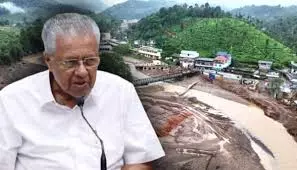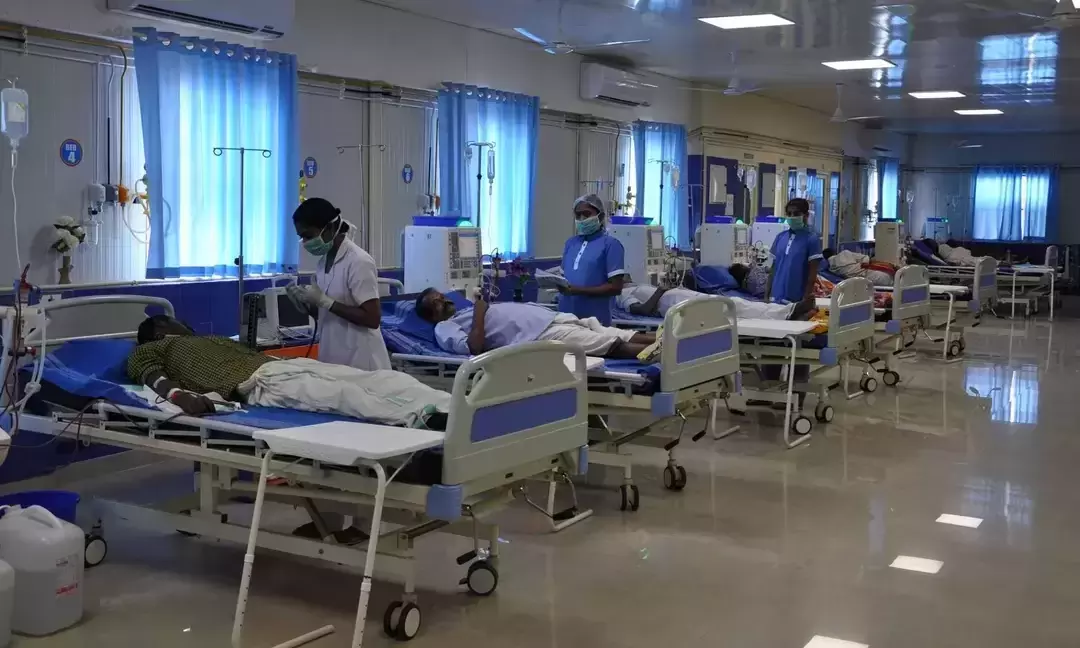
Let us bring back lives and land
text_fieldsAfter the disaster in Wayanad, the state is moving towards rehabilitation efforts. While government agencies and volunteer organizations are working hard, the efforts to restore shattered lives are still in the initial stages. Nearly five thousand families have been affected by the disaster, and hundreds are still in relief camps. There aren’t enough rental houses available to temporarily accommodate them. In the landslide area, 310 hectares of agricultural land were completely destroyed, and agricultural equipment was also damaged. A large portion of the disaster-hit area was inhabited by ordinary people, including plantation workers and others. They have lost not only their homes and property but also their livelihoods. It is estimated that ₹2,000 crores are needed just for rehabilitation, with much more required to fully restore their lives. It is clear that the state alone cannot bear this burden. That is why everyone looked forward to Prime Minister Narendra Modi's visit to Wayanad with great hope. The Prime Minister spent more time in Wayanad than initially scheduled. He conducted an aerial survey of the disaster-affected areas, visited the devastated Mundakkai and Chooralmala areas, and met those staying in the relief camp at Meppadi. He offered words of comfort, assuring them that they are not alone and that financial constraints would not be an impediment for offering support. This assurance has given hope to both the authorities and the people.
Although the Prime Minister did not announce any concrete package, he promised the state government all necessary assistance. He also told the media that the Union government and the entire nation stand with the people and government of the state. The Prime Minister has asked the Chief Minister to submit a detailed report. However, those who hoped for a tentative financial aid package immediately were left disappointed. It is now believed that a favorable decision will be made once the details of the requirements are provided. The central team that visited the district recently indicated that the impact of the disaster is significant and requires thorough and expert analysis. Such detailed studies will take time, but it is not feasible to wait that long for emergency assistance.
 Also Read:Wayanad landslides: Kerala High Court urges 'holistic approach' in development
Also Read:Wayanad landslides: Kerala High Court urges 'holistic approach' in development
As a disaster that requires central assistance due to severe damage, a temporary package is necessary. For states like Bihar, Uttarakhand, and Himachal Pradesh, the Union budget had allocated ₹11,500 crores for packages designed to help recover from natural disasters. Given the depth of the loss of lives and property, the Ministerial Committee on Disaster Management has stated that the Wayanad disaster deserves similar relief packages. Rebuilding homes, finding livelihoods, supporting students' education, and developing infrastructure are essential needs that cannot be overlooked. The Chief Minister has announced plans to develop a township for the disaster-affected population to international standards.
 Also Read:Kerala CM seeks PM's help for new township in landslide-hit Wayanad
Also Read:Kerala CM seeks PM's help for new township in landslide-hit Wayanad
The demand to declare the Wayanad disaster a national calamity has been strongly raised, but technical objections have been cited against it. Technicalities and regulations should not become obstacles in addressing the essential needs of people. After all, the law exists for the sake of humanity. The shortfall in the central government's regular allocation must be addressed. Kerala received ₹300 crore less than the allotted amount from the National Disaster Mitigation Fund (NDMF) last year, and this amount should be increased in light of the Wayanad disaster. It is the responsibility of the Kerala government to ensure vigilance and speed in seeking financial assistance and in carrying out reconstruction efforts. There is an allegation that even five years after the Puthumala disaster, the rehabilitation process has not yet been completed. In the current disaster itself, there has been no progress in identifying suitable locations for rehabilitation and the development of townships, despite discussions on the matter. Places outside the district have not been considered. Disaster prevention is as important as rehabilitation. Strategies for addressing the aftereffects of climate change and over-development should be in place. It's high time to adopt an environmentally friendly approach as a policy rather than just making it a slogan. In light of all these factors, it is essential to implement a comprehensive and long-term strategy involving the Union Government, State Governments, voluntary organizations, and local authorities to effectively address these issues.


















